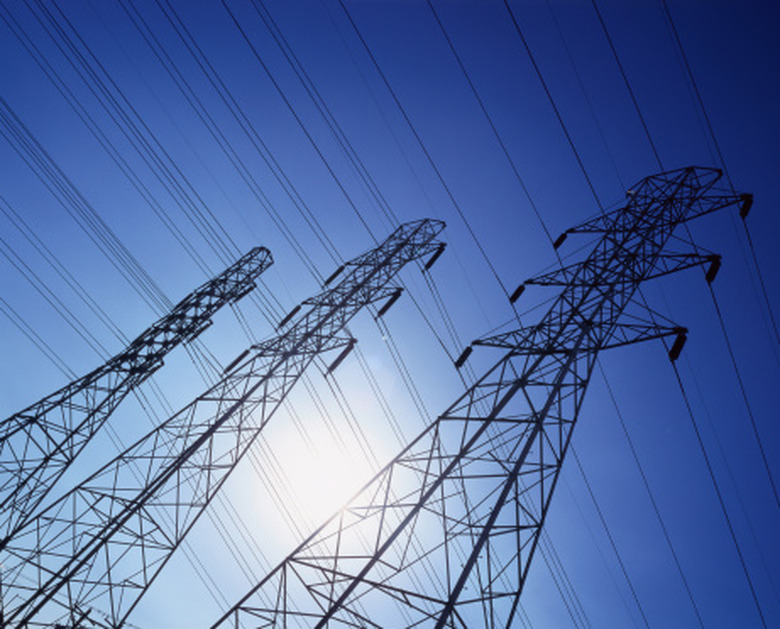How To Convert Amps Into BTUs
The number of amps running through a circuit describes the quantity of charge that runs through it each second. A couple other factors the amount of energy that this transfers. The voltage of the circuit specifies the amount of energy that each unit of charge carries. The amount of time for which the circuit runs converts this energy transfer rate to a quantity of energy.
Step 1
Multiply the number of amps that go through the circuit by the voltage across it. If, for example, 12 amps go through a 240 volt circuit: 12 × 240 = 2,880. This is the power going through the circuit, measured in Watts.
Step 2
Multiply the power rating by the time for which the circuit runs. If, for instance, it runs for 20 seconds: 2,880 × 20 = 57,600. This is the energy that the circuit transfers, measured in joules.
Step 3
Divide this answer by 1,055, which is the number of joules in a British Thermal Unit (BTU): 57,600 ÷ 1,055 = 54.6. This is the number of BTUs that the circuit carries.
Cite This Article
MLA
Menezes, Ryan. "How To Convert Amps Into BTUs" sciencing.com, https://www.sciencing.com/how-8498688-convert-amps-btus/. 7 August 2017.
APA
Menezes, Ryan. (2017, August 7). How To Convert Amps Into BTUs. sciencing.com. Retrieved from https://www.sciencing.com/how-8498688-convert-amps-btus/
Chicago
Menezes, Ryan. How To Convert Amps Into BTUs last modified March 24, 2022. https://www.sciencing.com/how-8498688-convert-amps-btus/
